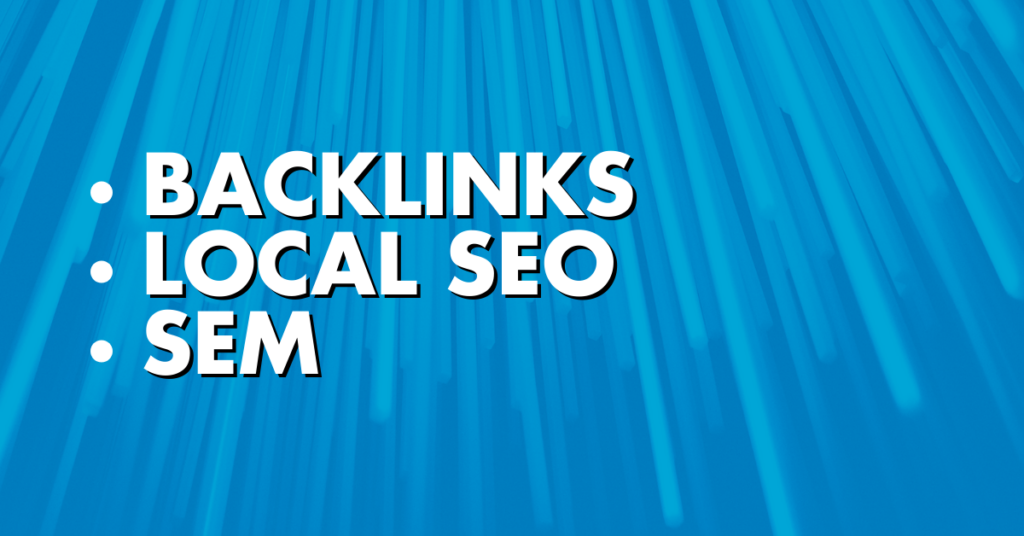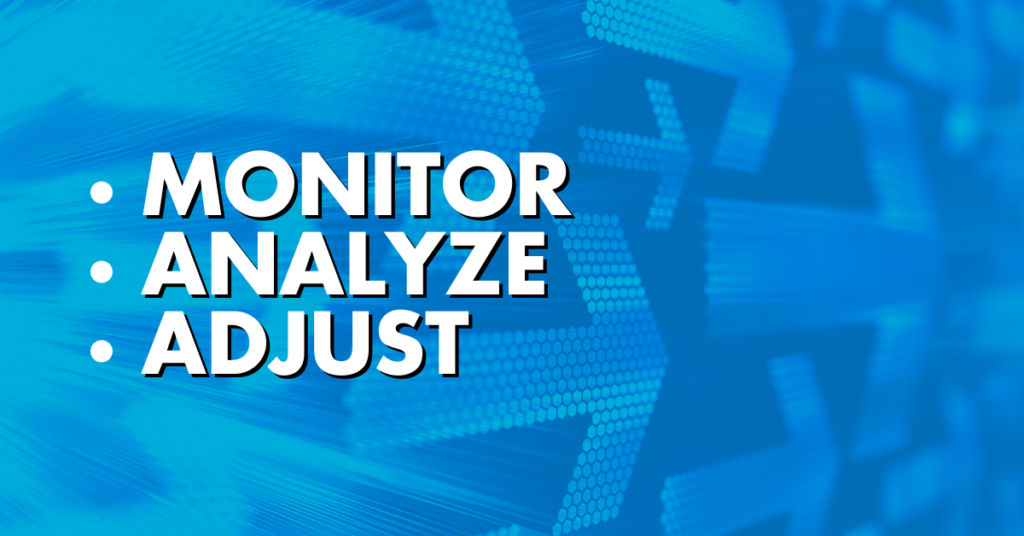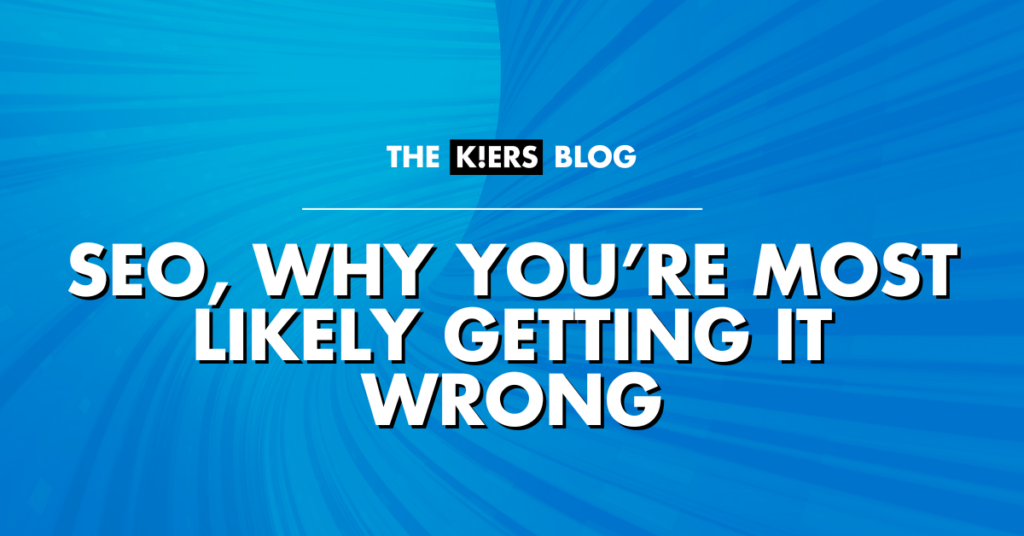In the digital era, Search Engine Optimization (SEO) continues to be an essential part of website marketing, driving visibility, engagement, and conversions. However, the complexity and ever-evolving nature of SEO means that achieving and maintaining high search rankings is not as simple as paying a one-time fee, and it NEVER was. This article delves into the various components of SEO and how to leverage these principles in 2024, or at the very least ensure a marketing agency you’re engaging with is telling the whole truth.
We here at Kiers Marketing believe in transparency and will never tell you to pay us to build you a website without telling you nobody will see it unless you put Time, Money and or People (the three essential components of marketing) behind it. We will always ask you for your proposed budget instead so that we can build a proposal that works for you and your business goals.
Understanding the Components of Search Engine Optimization

On-Page: The Foundation of Your Content
If you’re about the engage a marketing agency for help with SEO, it is important to figure out if they understand the basic principles. Provide them with a list of the headlines in this article and see if they understand the difference. We’re willing to bet the majority of local/regional agencies do not.
- Content Quality: High-quality, relevant content is pivotal. It must address the audience’s needs and stand out in the digital landscape. Think about being authentic and making the investment to get local content. Stock footage works, but if you get a few local models in your photos, they may also help you promote it, increasing your organic (unpaid) reach.
- Keyword Research: Identifying and integrating the right keywords ensures that your content is discoverable by your target audience. No need to go too heavy making sure the word “marketing” is everywhere on every blog your agency writes. This will downgrade the quality of the content and User Experience, leading to worse search rankings. Expect to take between 6-8 hours of research if you have experience in this area. Also, don’t forget to regularly update your keywords based on quarterly or bi-yearly analysis.
- HTML Tags: Title tags, meta descriptions, and header tags play critical roles in highlighting the relevance of your content to search engines. If you don’t know what these are, fear not, most website development platforms offer areas on each page with those titles as well as explanations of each.
- Media: Optimized images and videos not only enhance user engagement but also contribute to search rankings. Make sure to make the file name descriptive. If your image is titled IMG_469462926, website crawlers will have no idea what that image shows, nor will they be able to understand its purpose. Site crawlers view the words ones and zeros of an image, not the visual elements, so help them out.
- URLs: Descriptive, keyword-rich (but not too rich) URLs help search engines and users understand the content of a page. This goes for social media handles as well. Even your LinkedIn page can take advantage of a customized URL to help people understand what they will see after they click on the link.
- Internal Links: If you have a blog-heavy or webpage-heavy website, linking from one page to another can help optimize the user experience and encourage people to stay on your site longer. They enhance site navigation and distribute page authority across your website.

Off-Page: Building Your Site’s Reputation
- Backlinks: Simply put, backlinks are how many links on the internet link back to your website. The more you have, the potentially higher your rankings due to your perceived authority on a subject or a product. Quality backlinks from REPUTABLE sites signal trustworthiness and authority to search engines who are crawling your webpage.
- Local SEO: For businesses serving local communities, optimizing for local search is crucial. Is your product only sold in New Brunswick If so, think about making sure your content reflects that and mentions the province. What used to be called Google My Business (up until April 6, 2022), is now handled directly on Google’s Search page. However, since March 2023, Local Service Ads have expanded to include more industries in more countries. They are advertisements that help you rank within Google’s ecosystem and ensure the people seeing your ads are those in your service area.
- SEM including Social Media: Search Engine Marketing (SEM) and social media activities can complement SEO efforts by increasing visibility and traffic. Often overlooked, this is one of the most important long-term SEO tactics available to you. Marketing takes just three things: Time, People and Money. The more you have of one, the less you need of another. So, if you have the money, you can drastically speed up the time it takes for your content to rank by using paid ads. Always keep in mind the E-E-A-T (Experience, Expertise, Authoritativeness and Trustworthiness) and YMYL (Your Money or Your Life) principles in mind though when creating content. As of 2024, these are the two main principles Google uses to rate content quality.

Technical: Optimizing Website Performance
- Site Speed: Fast loading times improve user experience and positively impact rankings. It was once said that if your page takes more than just THREE SECONDS to load, you’ve already lost up to 75% of potential site traffic. Figuring out the technical aspects of SEO is one of the more difficult activities, but knowing where to start is the most important. Do you have a web developer? Do you have a web host? Go to Google’s PageSpeed Insights, input your site’s URL and get actionable insights you can send your developer in seconds.
- Mobile-Friendliness: With mobile searches dominating, a mobile-responsive design is essential for most organizations. Why do we say most? Because of the data which we explained the importance of in another post found here. After doing a site audit, which we recommend you do before any big changes to your site, we found that most site visits from clients we work with in New Brunswick were done through desktop computers. These were mostly B2B operations. For clients of ours who sell B2C, we found that the standard mobile-first rule still applies. For the B2B sites we analyzed, traffic from a Desktop device was, on average, 58% higher than visits from any other device type. For our B2C clients, the difference is huge. On average, visits to a website from a mobile device we 136% higher than those from any other device type. Desktop computers and cell phones are still the two highest-ranking device types when compared to others such as tablets.
- Structured Data Markup: It is a piece of code that you add to your website’s HTML to improve the way search engines read and represent your page in search engine results pages (SERPs). This helps search engines understand and display content in search results more effectively. The markup is structured according to schemas defined at Schema.org, a collaborative effort among Google, Bing, Yahoo, and Yandex to create and support a common set of schemas for structured data markup on web pages.

User Experience (UX): Ensuring Engagement and Retention
- Site Navigation: Easy and intuitive navigation is key for keeping visitors on your site.
- Content Layout: Well-organized content encourages consumption and interaction. Stay away from flashy and trendy additions/animations on your site as these can become outdated quickly and even cause your site speed to drastically slow down.
- Interactive Elements: Interactive features can significantly enhance user engagement. As with the layout of content, we feel as though less is more here. Interactive elements can be fun, provide valuable data and keep people on your site, however, watch that site speed and ensure the tools used to create those elements will last. We tend to follow the old fashion industry adage of the importance of having a little black dress in your wardrobe. Classic may not immediately excite, but it will ALWAYS look good. Trends, whether they be in fashion or web design, tend to move quickly and look outdated and cringeworthy even sooner.

Analytics: The Key to Continuous Improvement
- Monitoring: Regular monitoring of SEO performance is essential to understand its impact. As with any marketing tactic or overall strategy, monitoring, analysis and adapting are key to long-term success and growth. Google’s algorithm, along with almost every other platform’s algorithm, CHANGES WEEKLY. What worked last month, may not this month. It’s important to install analytic software on your website immediately after its completion. Without it, your business decisions run a very real risk of being emotionally and opinion-driven, which is not what your audience wants. As with the example above under mobile-friendliness showcases, the internet is filled with GENERAL advice. We prefer to start with the general and then gather data to inform our decisions. This way, we can be certain our choices aren’t just what we want, but what our audiences want.
- Analyzing and Adjusting: As our blog post on the importance of data in 2024 outlines, we feel as though this is one of the most important aspects of a proper SEO strategy and the one that forces SEO into the long term. The analysis allows for identifying areas of improvement and adjusting strategies accordingly. Just make sure you have enough data. Classically trained Data Analysts will tell you that you need at least a year’s worth of data to be collected before an impactful analysis can take place. Want to make short-term predictions based on data? You’ll need a minimum of two years’ worth. Want to make longer-term predictions about business performance? You’ll need five to ten!
The Ongoing Nature of SEO
In case you haven’t figured it out from the content above, we reiterate that SEO is not a one-and-done activity. You should be prepared to spend in the long term. Below we expand on a few of these reasons we believe offer the biggest impact.
Why It’s Not a One-time Investment
SEO is dynamic, with search engines constantly updating their algorithms. What works today may not work tomorrow. That’s why we subscribe to a few choice mailing lists and review the weekly updates every almost Monday. Continuous optimization, content creation, and strategy adjustments are necessary to stay ahead in a digital world filled with ever-increasing noise due to lazy companies focusing on the quick buck, lazy marketers and AI.
Adapting to Changes
Staying informed about the latest SEO trends and algorithm updates is crucial. Adapting your strategies to these changes ensures sustained visibility and relevance. We like reading content from Neil Patel and Semrush to stay ahead. But watch out, they send out a lot of emails because there are a lot of changes constantly in the works behind the scenes at these large tech companies.
Long-term Commitment
Effective SEO requires a long-term commitment. This doesn’t have to be a break-the-bank commitment. It’s about gradually building your site’s authority and user experience to achieve and maintain high rankings. That’s why we don’t provide quotes on marketing activities or have a price list. Marketers who do are either offering you sub-par content or don’t value their own time properly. After meeting with a client, we can get an understanding of their goals and budgets. There are 1000 ways to get the same results in marketing. The strategies and proposals we create are tailored to your needs and your budget. Don’t have enough money right now to do everything? Talk to us and we’ll provide solutions both short and long-term that will help your business grow sustainably.

Leveraging SEO in 2024
To leverage SEO effectively in 2024, think about the following:
- Holistic Strategy: Integrate all components of SEO sustainably for a comprehensive approach. Small businesses in Atlantic Canada rarely have the budgets to do everything listed above. However, you can certainly avail yourself of all SEO tactics over time. Don’t stretch your mental capacity or your budget to the point of breaking. Plan for the long term and simply adjust your short-term expectations accordingly.
- Quality Over Quantity: Prioritize high-quality content and backlinks over sheer volume. It’s been proven that content solely written by a human almost always outperforms content solely written by a machine learning tool (for now).
- User-Centric Optimization: Enhance user experience at every touchpoint. This is another reason to keep your website simple if that’s the nature of your business. If you have thousands of products, multiple business lines and languages, then you can’t have a simple website, but if you can, remember that like the little black dress, classic web designs will remain popular no matter what trends are out there.
- Agile Adaptation: Be ready to quickly adapt to search engine updates and changes in user behaviour. The importance of data and proper analysis cannot be overstated here.
- Data-Driven Decisions: Use analytics to guide your SEO strategies and make informed adjustments. Start collecting early and set yourself up for long-term growth.
Search engine optimization in 2024 remains a complex, multifaceted endeavour that goes far beyond a one-time payment.
It encompasses a wide range of activities, from on-page content optimization to technical improvements and ongoing analysis. Understanding and implementing the various components of SEO is crucial for any business aiming for long-term online success. With a continuous, integrated approach, businesses can navigate the complexities of SEO, adapting to changes and capitalizing on new opportunities to stay ahead in the digital landscape.
Need help or just want to chat about the possibilities? Give us a call today!
